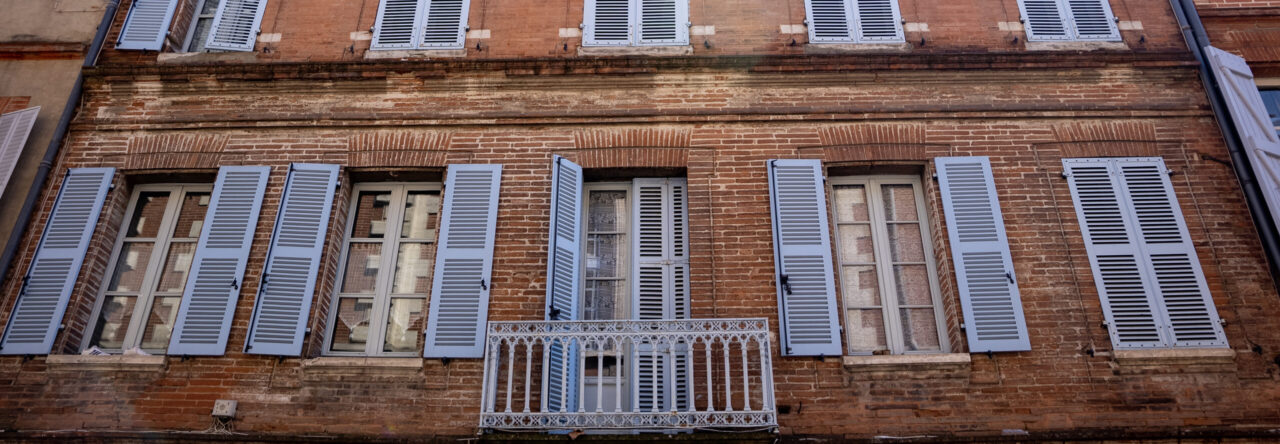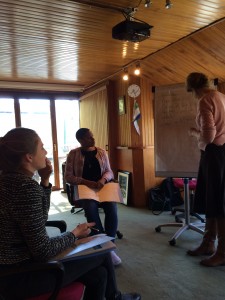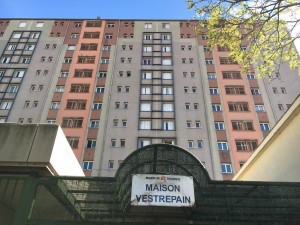-Geneviève Pecsok

L’objectif d’un appareil photo de la brocante à François Verdier. Photo de Genevieve Pecsok.
J’ai de la chance d’avoir des amis de la famille qui habitent à Toulouse et qui m’ont chaleureusement accueillie dans « La Ville Rose. » Un dimanche de février, ils m’ont gentiment invitée chez eux dans le quartier des Demoiselles pour le déjeuner. Je n’entrerai pas dans les détails du repas complet et copieux qui était très différent du repas simple auquel je m’attendais. Ça, c’est une analyse interculturelle pour un autre jour. Ce qui a le plus attiré mon attention c’est qu’après le déjeuner, ils m’ont amenée au cinéma. Aller au cinéma est, bien sûr, une activité de base dans de nombreuses cultures. Alors pourquoi cela m’a-t-il autant troublée? En fait, j’ai remarqué une différence subtile mais importante dans la façon dont le cinéma est perçu par les deux cultures. Aux États-Unis, il existe une sorte de marque d’infamie dans le fait d’aller au cinéma. Notre culture fait que nous passons beaucoup de temps devant des appareils portatifs et des écrans d’ordinateurs et de télévisions, mais simultanément, nous luttons contre cette habitude. On fait un effort en faveur de plus d’interactions en face-à-face et on met l’accent sur la préservation des classiques. Personnellement, j’adore les films, mais pour moi, c’est un péché mignon. Quelquefois, j’opte pour voir une adaptation cinématographique plutôt que de lire le livre. D’autres fois, je vois le cinéma comme un petit plaisir, un moyen de me détacher de ma vie pour un instant, avec du pop-corn dans une main et des Twizzlers dans l’autre. C’est un loisir, de l’« Entertainment » qui m’aide à échapper temporairement à mes obligations : je devrais écrire mon devoir, je devrais interagir avec ma mère au lieu d’être assise à côté d’elle les yeux rivés sur mon portable, ou je devrais profiter du beau temps ou faire du sport.
Je ne veux pas dire que l’industrie du cinéma aux États-Unis n’est pas vibrante. Au contraire, le cinéma américain est en plein essor et établit des précédents. De Hollywood à Cannes, je crois sincèrement que les deux cultures apprécient grandement le cinéma. Cependant, je ne peux pas m’empêcher de remarquer que les films ont une place différente dans la culture française. En France, le cinéma est considéré comme une forme d’art, une base de discussion. On va au cinéma avec l’intention de partager nos idées ou nos réflexions à la fin du film. J’ai pu observer personnellement la passion française pour le cinéma. Mes hôtes vont souvent au cinéma et c’est un sujet qui est souvent abordé dans nos conversations. Une autre amie de la famille m’a dit qu’elle allait au cinéma plusieurs fois par semaine. Les films sont souvent mentionnés dans mes cours, et j’ai même discuté de cinéma avec des étudiants français pendant mon service civique.
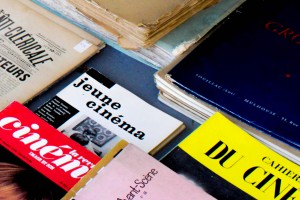
Des livres du cinéma à la brocante de François Verdier. Photo de Genevieve Pecsok.
Après que nous sommes allés au cinéma ce dimanche après-midi, nous avons beaucoup discuté de comment on pouvait s’identifier aux personnages et aux thèmes du film. Contrairement aux États-Unis, aller au cinéma n’est pas juste considéré comme un petit plaisir. Bien sûr, il existe des exceptions dans les deux cultures, mais en général, je constate qu’il existe une pédagogie globale de l’art du film en France qui n’est pas la norme aux États-Unis ; l’Américain « fanatique » de cinéma correspond en fait à un Français moyen. Tandis que le cinéma américain est souvent associé aux acteurs connus, à la malbouffe, et aux super effets spéciaux, en France, on met l’accent sur le talent et l’intrigue, l’expression artistique et la profondeur. J’apprécie beaucoup la centralité du cinéma dans la société française. La différence n’est pas immédiatement évidente, mais elle a changé ma propre perception des sorties cinéma, et c’est une mentalité que je vais ramener chez moi.
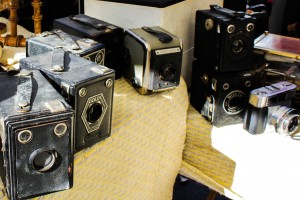
Des appareils-photos vintages – encore à la brocante de François Verdier ! Photo de Genevieve Pecsok.
